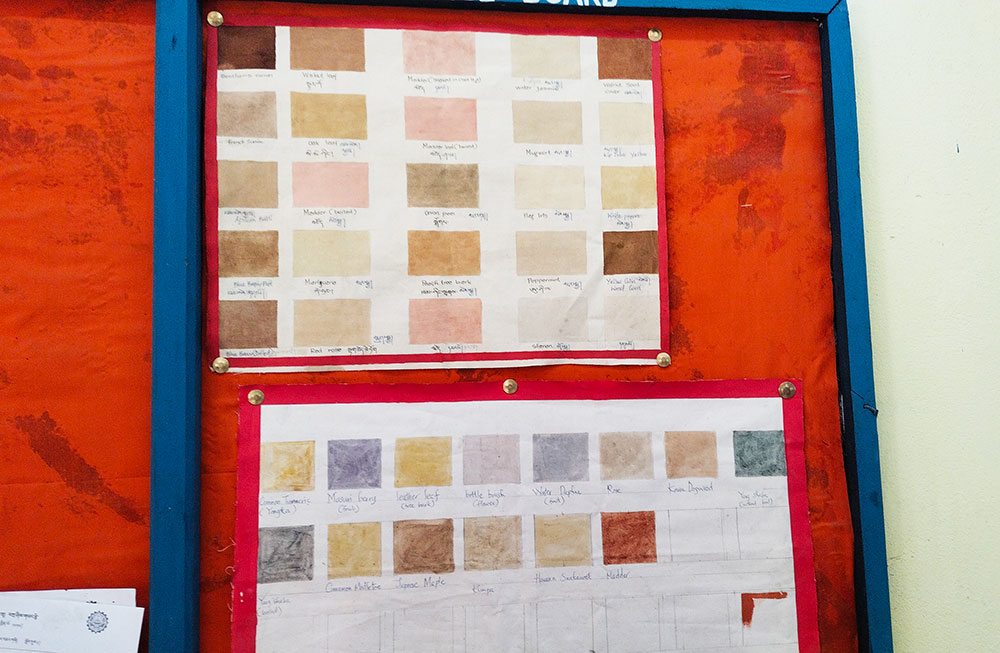THIMPHU (ANN/KUENSEL) – Introducing natural pigment art as a course at the College of Zorig Chusum in Trashiyangtse serves a dual purpose. Not only does it educate students in traditional painting methods, but it also revitalises the age-old practice of extracting natural pigments from plants.
Since its inception in 2021, the course has empowered students to derive approximately 20 vibrant colours from nature, breathing new life into a fading tradition essential to traditional painting.
A trainee of the National Diploma in Painting, Jamyang Tshultrim, said that although they had limited knowledge about natural pigment, with help from a former instructor, they have successfully begun incorporating them into their artworks.

However, despite their efforts, there remains a dearth of research on natural pigments.
According to Jamyang, they have learned which plants yield which colours, but comprehensive documentation is lacking.
“The process of extracting colours from plants is laborious and challenging,” he said, adding that research has become necessary. “There are so many natural pigments available across the country, but there are no documents available on them.”
Another trainee, Jamtsho, pointed out that while traditional art is included in the curriculum, not much importance has been given to reviving the tradition of deriving colours from nature like plants or rocks. He stressed the need for time and budget for research on natural pigments as it is available in the country.
Principal Kinley Penjor of the College of Zorig Chusum said that the primary goal of including Natural pigment art as a course was to revive the tradition and minimise the import of chemical paints. “Colours derived from plants do not contain any chemicals unlike their imported colours,” he said.
Before Bhutan started importing paints, it is said that natural pigments derived from plants were predominantly used for painting and dyeing clothes. However, with the onset of trade, chemical paints began to replace indigenous pigments, contributing to the decline in the use of plant pigments for painting.
Meanwhile, students collect raw materials from nearby areas, which are subsequently processed. The raw materials are boiled and soaked in water until colour seeps out. Dark brown colour is derived from walnut covers, yellow from marijuana, light green from mint, dark green from oak leaves, and orange from madder.
Students said that most of the thangkas and ku-thangs (scroll paintings) from the past were painted using natural pigment.

“We are experimenting with various methods of extracting natural colours,” shared one student. “Some plants yield colours when boiled, while others release colours without boiling.”
Painting Instructor at the college, Jigme Wangdi, emphasised the importance of documenting natural pigments citing the current lack of research in this area. He emphasised the necessity of resources for this endeavour. “I believe it is crucial to undertake this task, but without adequate resources, it is a challenge.”
Former teacher of Zorig Chusum College, Lopen Samten Dorji, reintroduced natural pigment into the National Diploma Painting curriculum at the college.

Samten Dorji said that in the past, painters used holy water and medicinal plants to make natural dyes.“If we use that, it will benefit both painters and customers,” he said “If Bhutanese go for natural pigments, it can benefit the country culturally and economically.”
Samten Dorji also expressed his willingness to contribute to research on natural pigment colours. “It is imperative to create a document that will assist people who are interested in natural pigments.”
Paintings made using natural pigments last longer and fetch better prices, according to the instructors.



